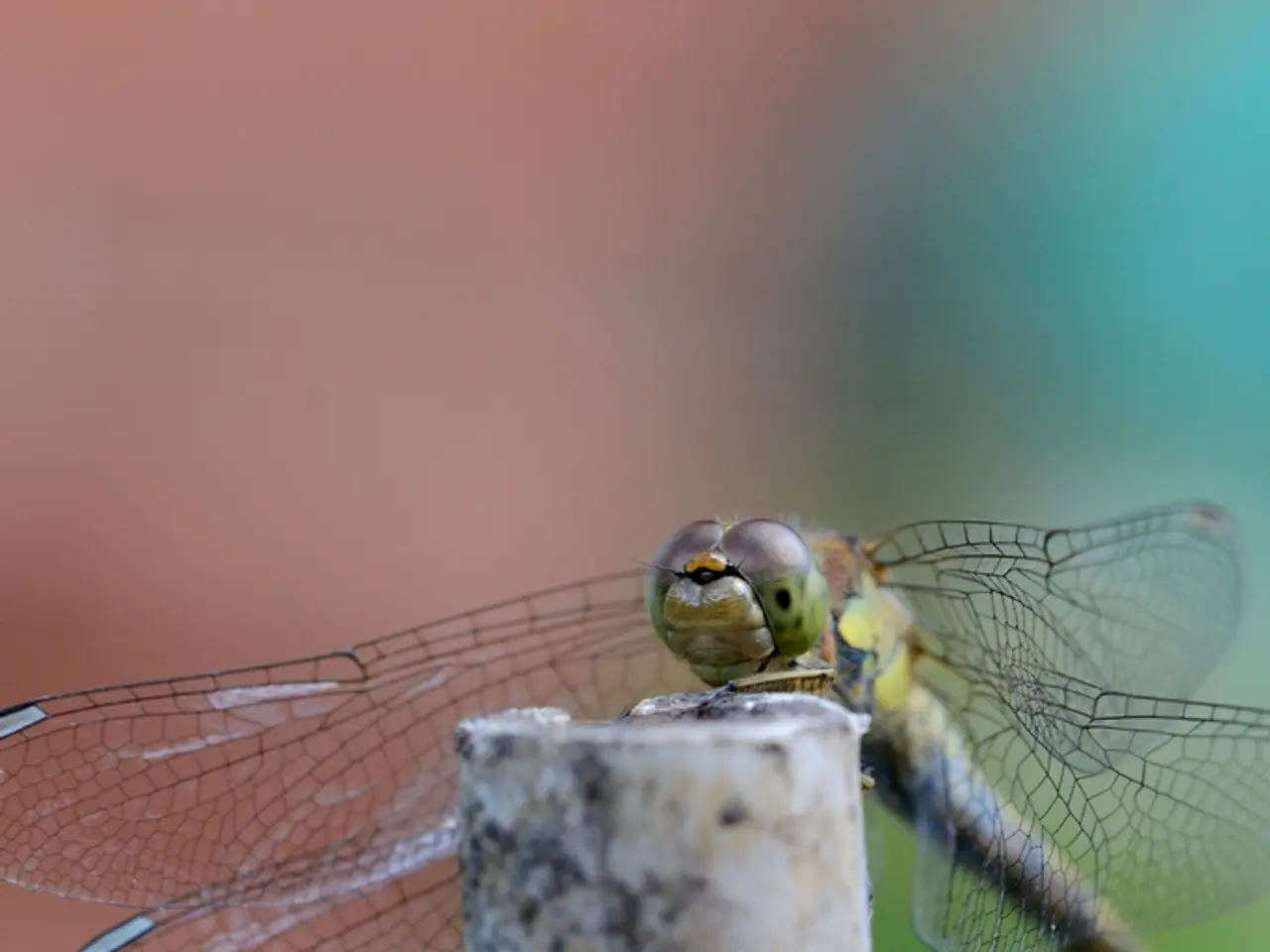Hotter environments lead to the loss of vibrant colors in male dragonfly species
In a groundbreaking study published in the Proceedings of the National Academy of Sciences, a team of researchers led by Michael Moore, a postdoctoral fellow with the Living Earth Collaborative at Washington University, have discovered that dragonfly males are evolving less wing pigmentation in warmer climates.
The study, with the DOI 10.1073/pnas.2101458118, found that excessive wing pigmentation can heat dragonflies up by approximately 2 degrees Celsius, which could potentially cause overheating in hot regions. This finding could have significant implications for the species, as it could potentially cause females to mate with males of the wrong species.
To conduct the research, the team directly measured the amount of wing pigmentation on individual dragonflies from almost 3,000 iNaturalist observations in a focused group of 10 selected species. They also examined the wing ornamentation of dragonflies in photographs submitted to iNaturalist and gathered information about climate variables in the locations where the dragonflies were observed.
The research, completed in collaboration with Kim Medley, director of Washington University's environmental field station, Tyson Research Center; Kasey Fowler-Finn, an associate professor of biology at Saint Louis University; and Washington University undergraduates Kaitlyn Hersch, Chanont Sricharoen, Sarah Lee, Caitlin Reice, Paul Rice, and Sophie Kronick, identified temperate and tropical climate regions where female dragonflies have changed their wing colors significantly less than males.
However, the reason for the difference in adaptation between male and female dragonflies is not yet known. The consequences of the changes in pigmentation as the world warms are still not fully understood. Rapid changes in mating-related traits might hinder a species' ability to identify the correct mate, potentially causing confusion in the dragonfly population.
The study suggests that dragonfly males may need to adapt to global climate change by evolving less wing coloration as the Earth warms over the next 50 years. On the other hand, dragonfly females are not showing any major shifts in wing coloration with the current climate.
While the study provides valuable insights into the evolution of dragonflies in response to climate change, further research is needed to fully understand the implications of these findings. The study can be accessed at the provided DOI.
Read also:
- Nightly sweat episodes linked to GERD: Crucial insights explained
- Antitussives: List of Examples, Functions, Adverse Reactions, and Additional Details
- Asthma Diagnosis: Exploring FeNO Tests and Related Treatments
- Unfortunate Financial Disarray for a Family from California After an Expensive Emergency Room Visit with Their Burned Infant








